Lifestyle
The Best Way to Forage for Beginners (Without Getting Lost!)
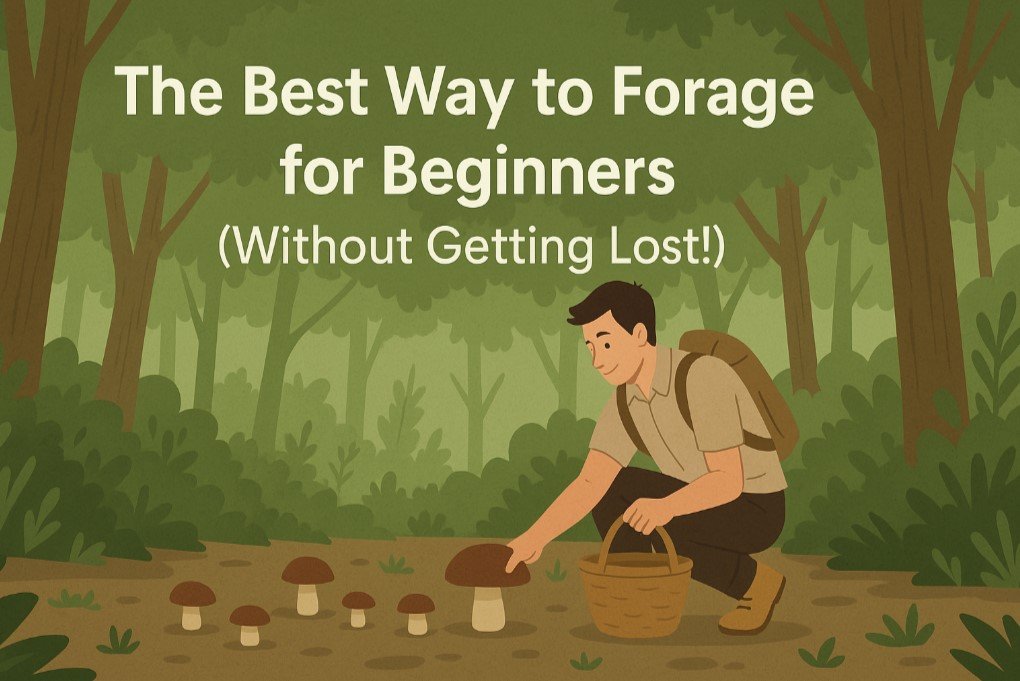
Foraging is the act of searching for wild food resources in the natural environment. It’s an ancient practice that humans have relied on for thousands of years. Today, it has made a comeback as people become more interested in sustainable living, eating local foods, and reconnecting with nature. If you’re new to this and wondering how to get started, this guide on the best way to forage for beginners is designed to help you take your first steps safely and confidently.
What is Foraging?

Foraging means collecting edible plants, fruits, herbs, mushrooms, and even some roots and nuts that grow naturally in the wild. Unlike farming or gardening, you don’t plant or water anything. You simply learn to recognize and respectfully collect what already exists in the environment around you.
Foraging can be done in many places—forests, parks, fields, and even urban areas. However, knowing what is safe to eat and what isn’t is essential, as some wild plants and mushrooms can be toxic or harmful.
Why Forage?
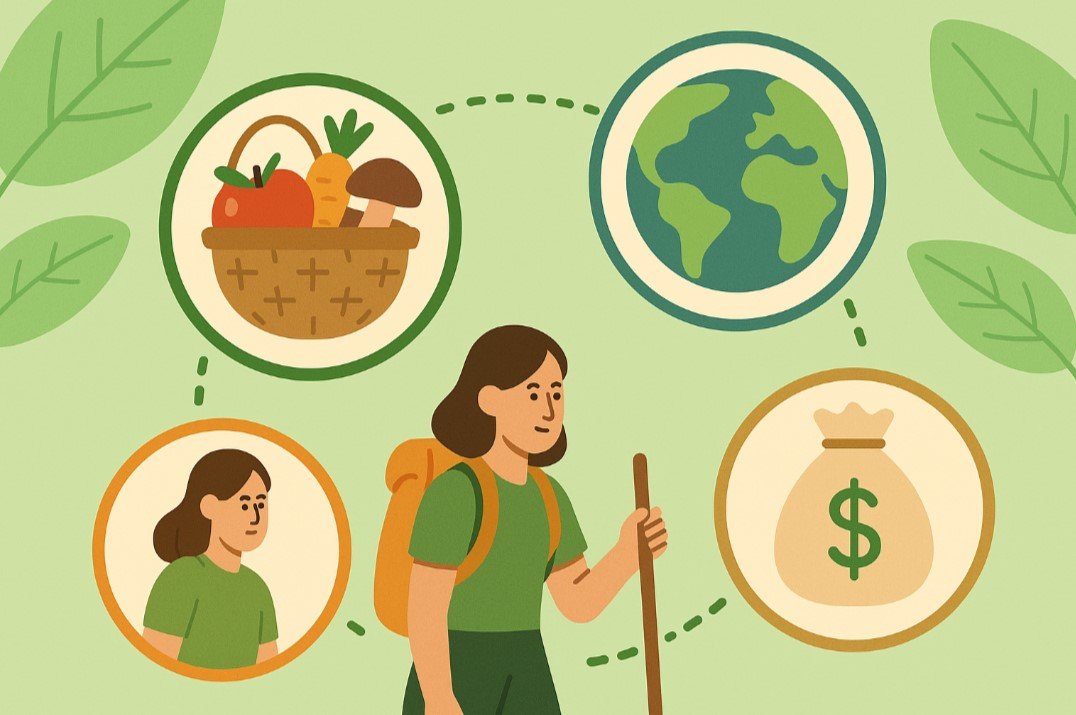
Foraging offers several benefits:
- It’s free and sustainable
- You learn more about local ecosystems
- You get exercise while exploring outdoors
- It supports a healthy and natural diet
- It helps reduce dependency on store-bought produce
For many beginners, it’s also about adventure, curiosity, and learning how nature can provide food with just a bit of knowledge and effort.
Start with Research
The first step in learning how to forage for beginners is research. Before heading out, take time to learn about your local region and the types of wild edibles commonly found there. You can do this by:
- Reading local foraging books or plant ID guides
- Watching educational videos about safe foraging
- Taking online courses
- Joining local Facebook groups or Reddit communities for foragers
- Downloading a plant identification app (like Seek, PlantNet, or PictureThis)
The more familiar you become with your local plants and their seasons, the more successful and safe your foraging will be.
Know the Rules
Before you start collecting anything, it’s important to understand foraging laws in your area. Some parks and protected lands do not allow foraging. Others may limit the amount you can take. You should also respect private property and always ask for permission before foraging there.
Basic foraging etiquette includes:
- Only take what you need
- Avoid uprooting entire plants
- Don’t disturb animal habitats
- Leave some behind for others and for wildlife
- Carry out all trash or waste
Following these simple rules helps protect the environment and ensures that others can enjoy nature too.
Gear You’ll Need
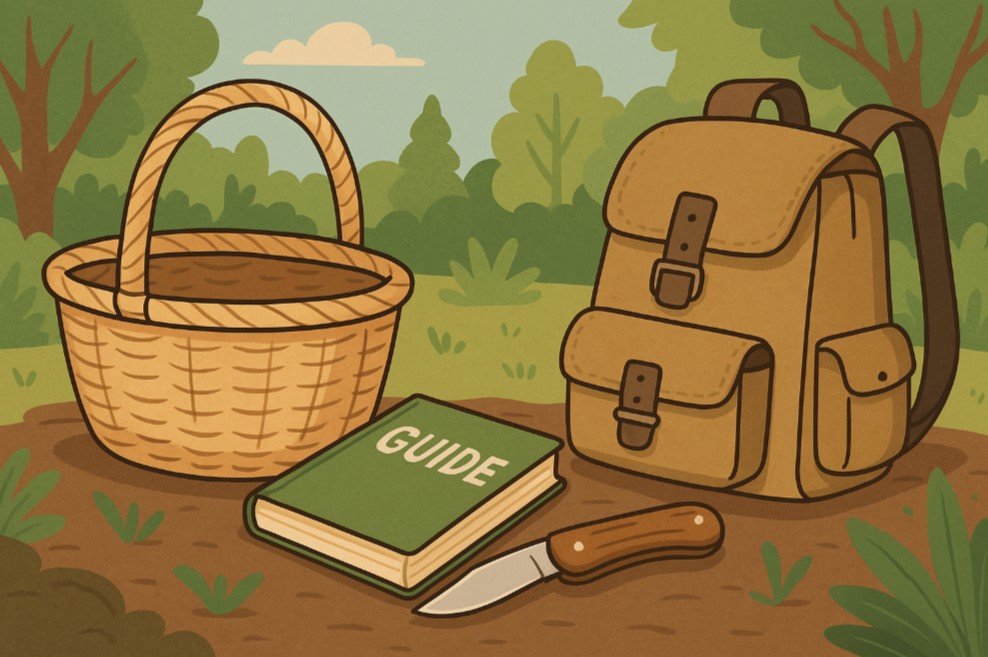
You don’t need expensive tools to start foraging. A basic foraging kit may include:
- A small backpack
- Paper or cloth bags (avoid plastic to prevent spoilage)
- A pair of scissors or a small knife
- Gloves (for prickly plants)
- A notebook or foraging guide
- A smartphone with a plant ID app
- Drinking water
If you’re going mushroom hunting, you may also want to carry a basket with air holes to keep the mushrooms fresh and prevent them from getting crushed.
Learn Common Edibles
As you start your journey, focus on easy-to-recognize, common edible plants and herbs. Here are a few beginner-friendly options found in many parts of the world:
- Dandelions: All parts are edible—leaves, flowers, and roots
- Nettles: Wear gloves while harvesting; great for soups and teas
- Wild garlic (ramsons): Smells like garlic; use in pesto or salads
- Blackberries: Easy to spot and delicious
- Chickweed: Tender, small green leaves for salads
- Pine needles: Can be used to make tea
- Plantain (the herb, not the banana): Found in lawns and parks
Always double-check before eating any plant. Many edible plants have poisonous look-alikes. Learning how to forage a plant safely includes knowing its key identifying features and any parts you should avoid.
Go Mushroom Hunting with Caution
Foraging mushrooms is one of the most exciting but also riskiest parts of foraging. Some edible mushrooms have toxic look-alikes, which is why it’s important to start with simple, unmistakable varieties. Here are a few Mushroom Hunting Pointers for beginners:
- Only collect mushrooms you can positively identify
- Join a mushroom walk or group in your local area
- Never eat a mushroom raw unless you’re sure it’s safe
- Spore prints can help confirm identification
- When in doubt, throw it out
Some beginner-friendly edible mushrooms include morels, chanterelles, and puffballs—but again, proper identification is crucial.
Stay Safe Outdoors
Nature can be unpredictable. Here are a few tips to stay safe:
- Tell someone where you’re going and when you’ll return
- Bring a fully charged phone with GPS
- Wear long sleeves and trousers to protect against insects and plants
- Use insect repellent and sunscreen
- Check yourself for ticks after your trip
- Carry a basic first-aid kit
The best way to forage for beginners includes knowing how to handle outdoor risks and being prepared for any situation.
Foraging in Different Seasons
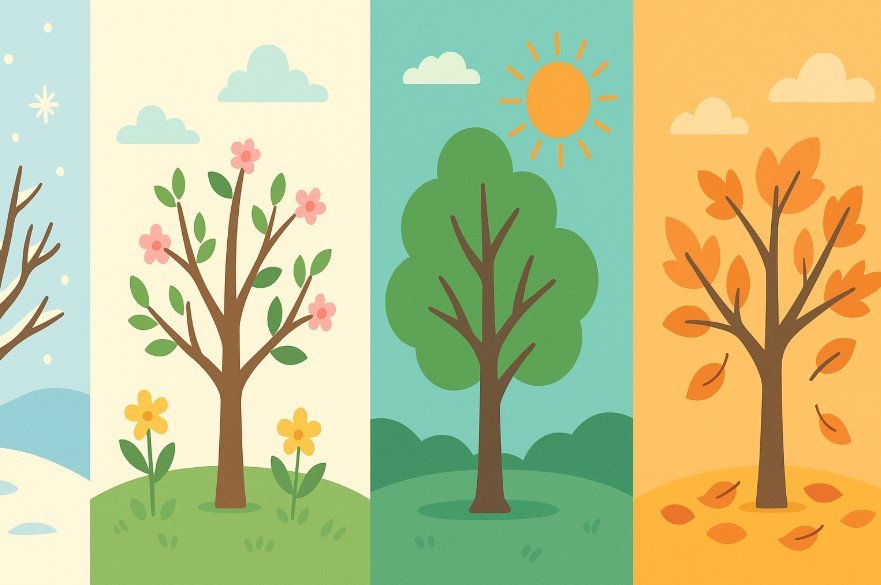
Each season brings its own opportunities:
- Spring: Young greens like wild garlic, chickweed, and dandelions
- Summer: Berries, edible flowers, and herbs
- Autumn: Mushrooms, nuts, and roots
- Winter: Pine needles for tea, and some evergreen edibles
Try to forage regularly throughout the year to understand what grows when and how the landscape changes with the seasons.
How to Forage for Fresh Produce
You might wonder if it’s possible to find fresh produce in the wild. The answer is yes—many fruits, greens, and even some vegetables grow naturally. However, “produce” in foraging means items like berries, wild apples, and edible greens rather than tomatoes or cucumbers. Here’s how to forage for fresh produce safely:
- Look for fruit trees in local parks or public areas
- Visit the community foraging maps that highlight urban spots
- Use your nose and eyes—ripe fruits often stand out
- Only pick from areas away from roads and pesticides
Washing everything thoroughly before eating is also important, especially if you’re foraging in urban environments.
Practice and Patience
You won’t become an expert overnight. Foraging is a long-term learning process. Each trip teaches you something new. Over time, you’ll build confidence and learn where to find certain plants during different times of the year.
Take photos, write notes in a journal, and observe how plants change over weeks and months. Be okay with making mistakes (just not the kind where you eat something you’re unsure of). Enjoy the process as much as the outcome.
Bringing It All Together
Learning how to forage for beginners doesn’t have to be complicated or overwhelming. Start small, stay curious, and always prioritise safety. Use the tools you have—books, apps, and expert guidance—to slowly build your knowledge. Remember, nature rewards patience, observation, and respect.
Expanding Your Foraging Skills
Once you’ve grasped the basics of foraging, you can begin to expand your knowledge and range. The more you explore, the more you’ll understand your local environment. Every new area has its own ecosystem, and foraging teaches you how to read the land. As you improve, you’ll discover plants and fungi you never noticed before, even in areas you thought were familiar.
One tip is to take regular walks through local woods, parks, and fields, even when you’re not planning to forage. Over time, you’ll notice patterns: where certain plants grow, what they look like as they mature, and when they’re ready to be harvested.
If you’re wondering how to forage a plant properly, pay attention to these steps:
- Identify the plant using a reliable guide
- Make sure it’s growing in a clean and safe area (away from pollution)
- Harvest only mature leaves, fruits, or flowers, leaving the rest of the plant intact
- Use clean tools or gloves when handling
- Don’t overharvest—take a small amount and leave enough for the plant to regrow
Foraging responsibly is about sustainability. You want to be sure that the same spot will continue to produce food in the future.
Get to Know Look-Alikes
Foraging is exciting, but you must stay cautious. One major rule is to learn the difference between edible plants and their toxic look-alikes. For example, wild carrots look very similar to poisonous hemlock. The same goes for mushrooms—edible puffballs can resemble young forms of deadly Amanita species.
You don’t have to memorize every poisonous plant, but when you’re starting out, it’s good to pick five or six edible species and study their characteristics in detail. Then, research which plants or mushrooms look similar, and how to tell them apart. It could be the leaf shape, smell, or location that makes all the difference.
Avoid consuming anything if you’re even slightly unsure. The safest foraging for beginners happens when you’re confident in your identification.
Join a Foraging Community
Learning alone is possible, but joining a community will make your journey more enjoyable and safe. Look for local foraging walks, plant identification workshops, or community gardening groups. These groups often include experienced members who are willing to teach newcomers.
Online forums and apps also allow you to share pictures, ask for identification help, and learn from others’ experiences. Just be sure the information you get is from reliable or verified sources.
Facebook groups, Reddit’s r/foraging, and Meetup.com are good places to start. When you’re with others, you’ll pick up tricks that books and videos might not teach you.
Foraging with Kids or Friends
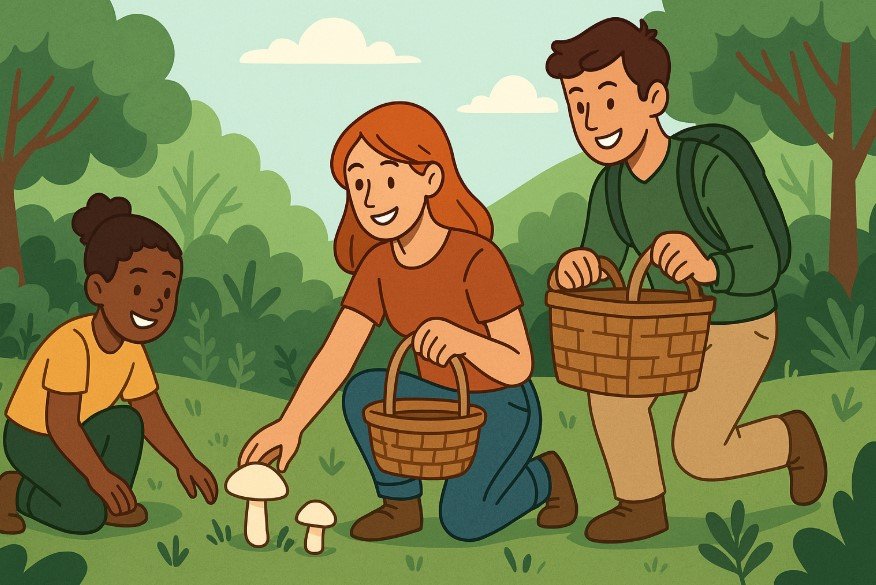
Foraging is not just a solo activity. It’s a great way to spend time outdoors with friends or family. If you have children, teaching them to identify safe plants can be both fun and educational. It encourages curiosity, patience, and awareness of nature.
When foraging with others:
- Teach safety rules clearly (no tasting anything unless approved)
- Bring snacks and water to keep energy up
- Make it a game by identifying as many species as possible
- Let kids collect items like pine cones or safe berries
Even for adults, it’s more enjoyable when shared. Exploring nature with a partner or group helps you stay safe and increases the chances of finding something interesting.
Cooking What You Forage
One of the most rewarding parts of foraging is preparing meals with what you find. Edible greens like dandelions, nettles, and chickweed can be added to salads or cooked as side dishes. Berries can be used in jams, pies, or smoothies. Mushrooms can be fried, grilled, or added to soups.
Always wash your harvest thoroughly to remove dirt or insects. If you’re cooking mushrooms or new plants, try a small amount first to check for allergies or digestive issues.
Here are a few ideas to try:
- Nettle soup with potatoes and garlic
- Wild garlic pesto with pasta or bread
- Dandelion flower fritters as a crispy snack
- Berry compote over pancakes or porridge
- Sauteed mushrooms with herbs and olive oil
Start with simple recipes. Let the natural taste of your ingredients shine.
Keep a Foraging Journal
Keeping track of what you find, where, and when can turn you into a skilled forager over time. In your foraging journal, note:
- The name of the plant or mushroom
- Date and location
- Weather conditions
- Habitat (sun, shade, forest, field)
- What part you harvested
- What you did with it afterward (cooked, dried, stored)
Photos are also helpful. Over time, your journal will become a personal reference guide for future foraging trips.
You’ll begin to notice seasonal cycles and can plan ahead for when certain foods are most available.
Foraging in Urban Areas
If you live in a city, don’t worry. Urban foraging is possible and often surprisingly productive. Many edible plants grow in parks, along sidewalks, or near community gardens.
Common urban edibles include:
- Purslane (a succulent often found in cracks and corners)
- Lamb’s quarters (weedy but highly nutritious greens)
- Mulberries (found on trees in parks or along fences)
- Wild grapes (climbing vines often seen on fences)
- Apples and plums (planted by cities or growing wild)
Be sure to avoid areas sprayed with pesticides or near roads with heavy traffic. Also, make sure it’s legal to pick plants from the location you choose.
Preservation and Storage
Once you begin collecting more than you can eat immediately, you’ll want to learn how to preserve your foraged goods.
Some popular methods include:
- Drying: Good for herbs and mushrooms. Use a dehydrator or air dry.
- Freezing: Berries and greens freeze well after washing.
- Fermenting: Try making kimchi or sauerkraut with wild greens.
- Canning or making jams: Berries and fruits can be preserved for months.
- Infusing: Make oils, vinegars, or teas with herbs and edible flowers.
Proper storage helps reduce waste and lets you enjoy wild foods year-round.
Avoid Common Mistakes
Here are some things to avoid when foraging for the first time:
- Don’t forage near highways or polluted areas: Plants can absorb heavy metals and toxins.
- Avoid private land without permission: Trespassing is illegal and unsafe.
- Never assume a plant is edible because it looks like something from the store: Many wild plants are toxic, even if they resemble common foods.
- Don’t overharvest: Leave enough for wildlife and the plant’s survival.
- Stay aware of your surroundings: Getting lost is easy if you’re not paying attention.
The best way to forage for beginners is to move slowly, stay curious, and always put safety first.
Final Thoughts
Foraging is a skill that brings you closer to the land. It teaches you patience, attention to detail, and respect for nature. While it might seem challenging at first, it quickly becomes enjoyable and rewarding.
If you’re ready to try it, begin with the basics. Learn how to forage for fresh produce and easy-to-identify plants. Follow good mushroom-hunting pointers to stay safe. Use guides and communities to keep learning and document your progress. Whether you’re figuring out how to forage for beginners or are just interested in getting outside more, this journey can become a fulfilling part of your lifestyle.
Let nature feed your curiosity, one wild ingredient at a time.
-

 Social Media2 months ago
Social Media2 months agoWhat the “67” TikTok Meme Really Means
-

 Tech2 months ago
Tech2 months agoWhat To Do When Your Business Faces Network Vulnerabilities
-

 Self Improvement2 months ago
Self Improvement2 months agoUsing BCBS Rehab to Access Quality Addiction Care
-

 Games2 months ago
Games2 months agoPusoy Strategies for Play That Also Work in Pusoy Dos in English






